By JEFFREY RESSNER
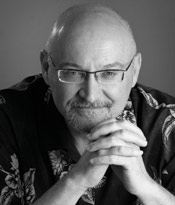 Furious flashes of lightning and the rhythmic pounding of thunder accompany the climax to Frank Darabont’s The Shawshank Redemption (1994), as wrongly accused prisoner Andy Dufresne (Tim Robbins) escapes after 20 years of captivity.
Furious flashes of lightning and the rhythmic pounding of thunder accompany the climax to Frank Darabont’s The Shawshank Redemption (1994), as wrongly accused prisoner Andy Dufresne (Tim Robbins) escapes after 20 years of captivity.
Most of the prison exteriors, but only a few of the actual interior rooms, were shot at the massive, abandoned Ohio State Reformatory. The prison cells, as well as the tight crawlspace between the cellblocks, were all built inside a nearby shuttered Westinghouse factory. Having two large prison sets—the original Reformatory castle and the newly-constructed interiors—gave Darabont more freedom than if had he attempted to restore the original jailhouse, which was falling apart after more than 100 years of misuse. “One day, a busload of actors portraying prisoners rolled up the driveway,” recalls the director. “At that moment, a 20-ton chunk of the wall fell onto the road.”
Digging a tunnel through the wall of his tiny jail cell with a small rock hammer, then crawling through a 500-foot sewage pipe, Andy’s odyssey leads him outside to a nearby stream during a ferocious rainstorm that also serves to cleanse his soul. From there, it’s full speed ahead to an ocean paradise in Mexico.
Based on the Stephen King novella Rita Hayworth and the Shawshank Redemption, and narrated through flashbacks by Andy’s longtime prison pal (Morgan Freeman), the scene lasts less than five minutes. Heightened by Thomas Newman’s dark score and Darabont’s cinematic tricks, its soaring sense of humanity overcoming negative forces remains a moving crowd-pleasing moment.
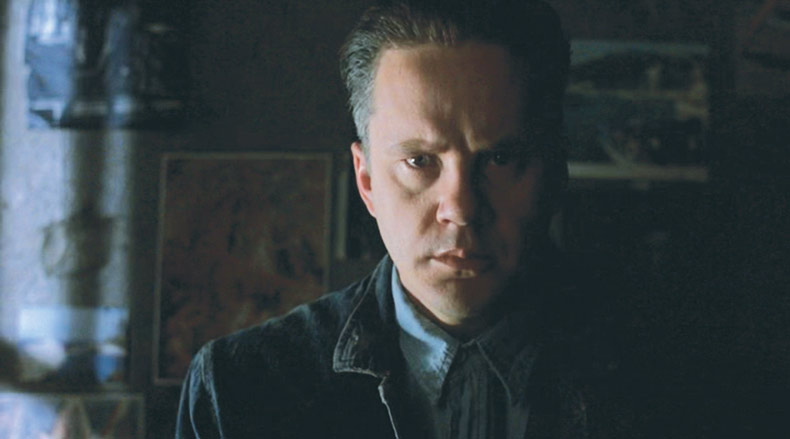
This entire sequence is a testament to legendary production designer Terence Marsh. People always assumed we walked into a big, empty prison and just started shooting, which is probably why Terry didn’t get nominated for an Academy Award, though he should have been. You can’t walk into a 6-foot by 9-foot cell, light it, move a wall and just begin shooting. The film’s actual set was half an hour away from the Ohio State Reformatory, built at a shuttered Westinghouse factory. Here we see Andy sitting on his bed, holding a rope, looking straight ahead at a poster of Raquel Welch glued to his cell wall. Then he attaches a plastic bag filled with clean clothes and the documents that will help him start a new life.
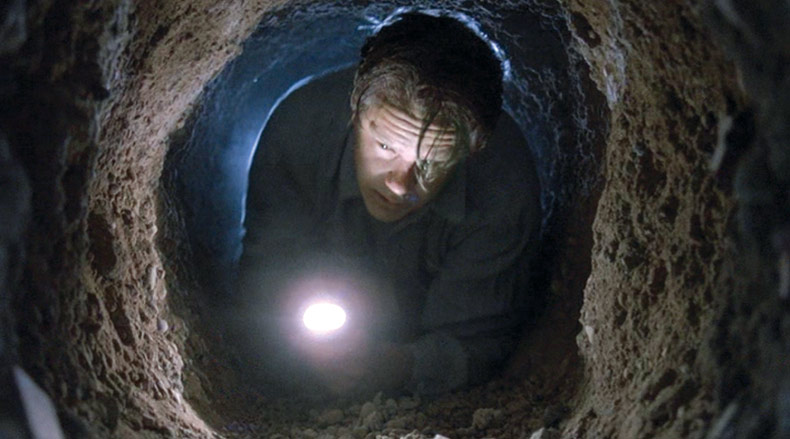
This shot was part of the prison set at Westinghouse and we see Andy squeezing through a tunnel he had carved for years with a small claw hammer. It was very convincing; just as the real cell would have had a tight opening going through it, so did this set. I’m sure we got in there with some sort of Ubangi that had a pullback arm and allowed Andy to crawl towards the camera and also allowed our DP, Roger Deakins, to cantilever the camera out over him for the perfect angle.
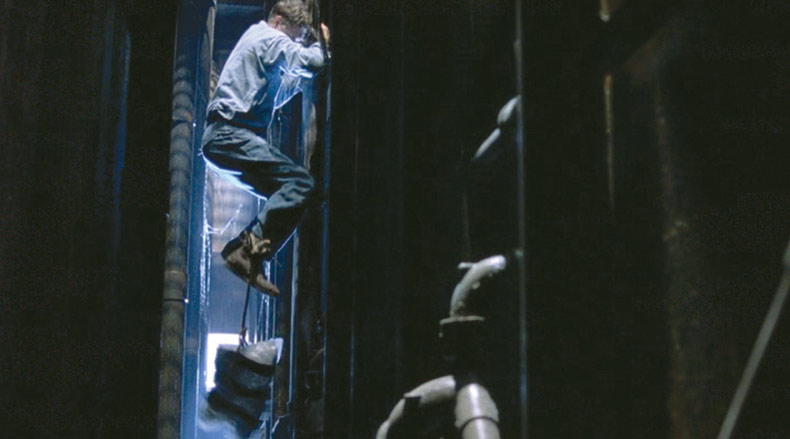
In this frame Andy has squeezed out of the tunnel into a very real depiction of the service space that existed between the two cellblock locations. This was also a set built by Terry, but it was so real that when Andy came out of his hole, he grabbed hold of what would naturally be there, and started climbing down. My major concern in the shot was for the audience to see the plastic bag tied to his ankle, because that explains everything later on about how he’s able to wear a perfectly pressed suit, etc. It’s just one very quick visual reference point that we absolutely needed to have, and it was an incredibly simple shot. We just got a crane in there, and as Andy climbed down to ground level we craned down with him.
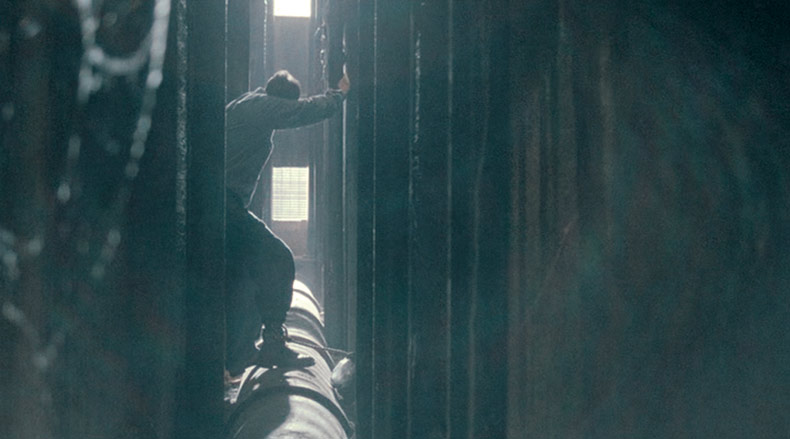
The area between cellblocks was a very narrow corridor that was very high and dropped down to ground level. At the bottom of the set was a fantastic clay pipe that Terry and his crew had built for us. Something in this shot I really loved—if you look over on the left-hand side of the frame you’ll see cobwebs. I really wanted to get that thing lit from behind as Andy hops down and lands on the pipe. I just loved the little detail of hitting the pipe and having the cobweb suddenly show up on the monitor. It’s one of those small things, those details that help to sell what a bleak, untraveled place this space is.
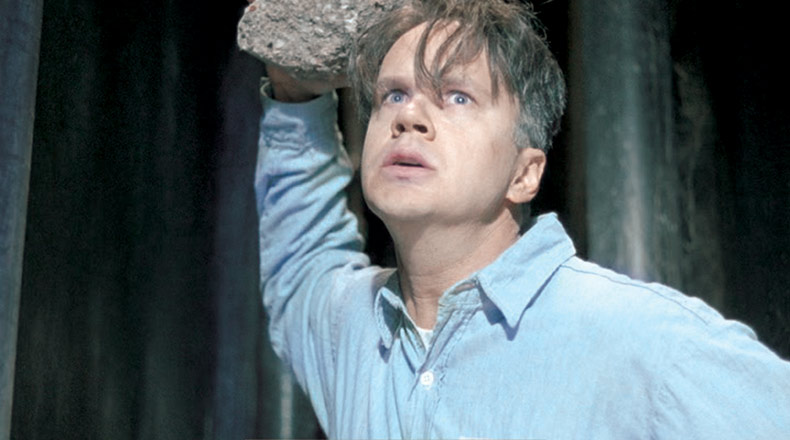
You have to make sense of certain things for the audience and also make them as interesting as possible. Here Andy lifts up a brick to pound the sewage pipe. If you’re banging on a pipe, every prisoner in the cellblock is going to hear that. So I had the character wait for a big thunder clap so he could cover up the pipe breaking with the noise from outside. Outside of the window we had Lightning Strikes! machines that gave us all our back lighting for this.
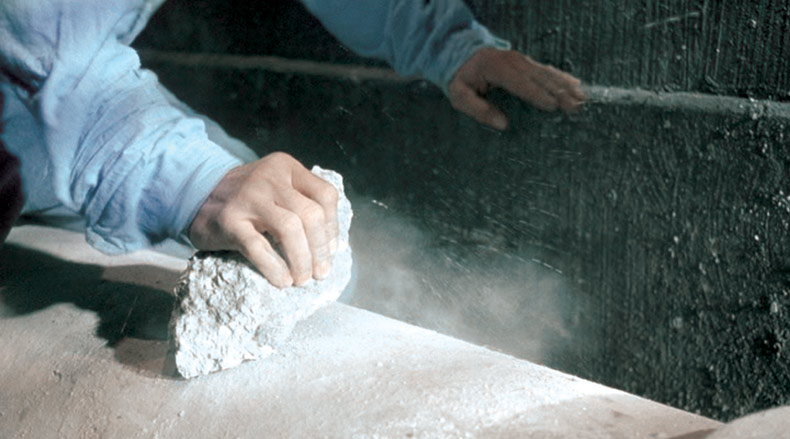
As I recall, the pipe had a breakaway piece, so when Andy hit it with the rock he could smash it on cue and the rock would fall inside. None of this stuff was in the novella. We just left that tube there [when we were done] and now it’s part of the display in the Shawshank Prison tour. The tour guide says, ‘This is the actual pipe where Tim Robbins crawls through a river of sewage in the film.’ The fact that we built this 20 years ago as a gag, and now it’s an object of fascination, is extremely funny to me.
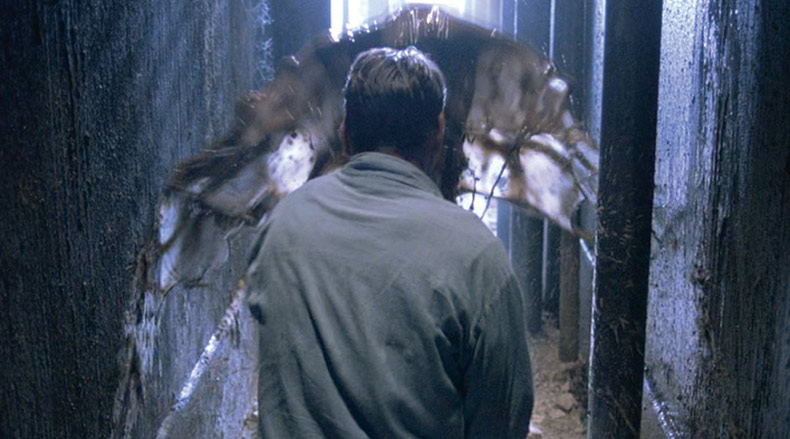
Here from behind is a kind of pressurized gag where you have a geyser of sewage fly out of the pipe as Andy finally cracks it open with a rock. On occasion, some plumber who saw the film would come up to me and let me know that sewer pipes aren’t pressurized like that, and there would be no spray of sewage if the pipes were suddenly cracked. What do I say? ‘Well, thank God we weren’t making a documentary … I can get away with stuff like this and make it more dramatic.’ Our hydraulics guys, or our ‘shit guys’ as it were, did a great job.
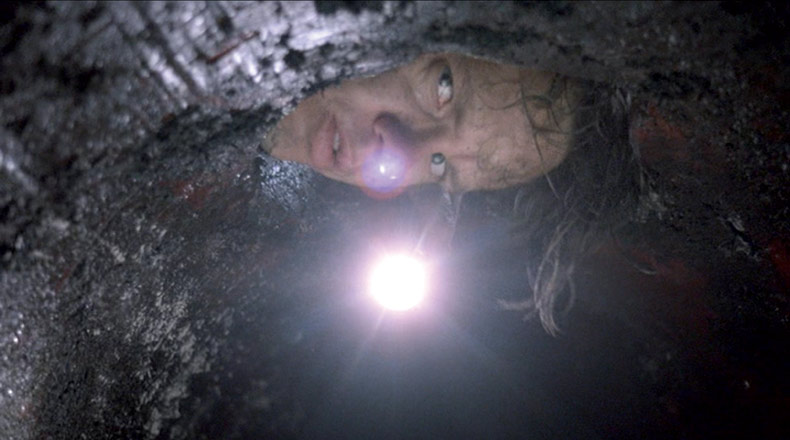
This tunnel is basically a Sonotube that was all dressed on the inside. We shot this in the same room in which the prisoners are marched through at the beginning of the movie, although you’d never know it. It’s just a big tube set up on a stand with all kinds of crud inside. Morgan Freeman’s character talks about 500 yards of foul-smelling muck, etc. I don’t remember what the sewage was made of; some say it was a mixture of chocolate and sawdust. But I promise you it wasn’t actual sewage.
The pipe he’s crawling through is a very thick cardboard column we use a lot when building sets. It’s about 20 feet tall and we stretched it out so it sat atop sawhorse-type frames. We dammed it shut at both ends so the sewage would remain and not spill out. The key is Tim crawling towards us in this river of shit, using the flashlight to illuminate the pipe for us, then also using the natural motions of his face to provide his own lighting. It’s a tremendously simple but effective shot.
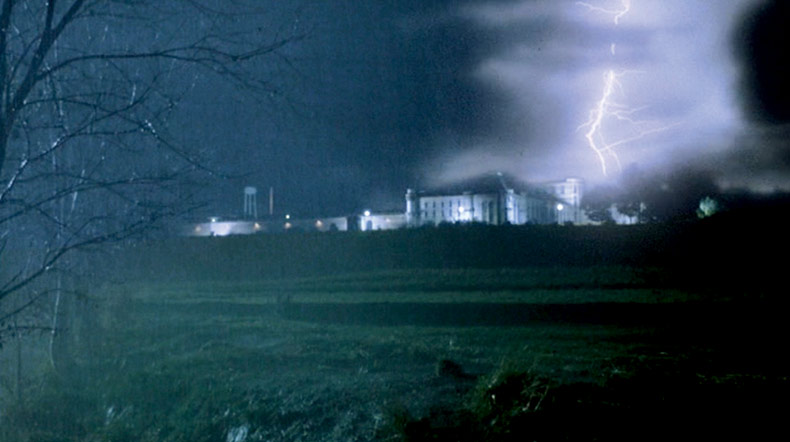
This is the real prison and the actual field. The lightning in this entire sequence is very important, and I like to operate my own lightning so there’s not somebody putting it where I don’t want it, or not getting it where I do. So whenever I do use lightning I always have them bring me the Lightning Strikes! controls so I can get exactly what I want. There’s an array of buttons and they can all be adjusted for certain durations. I can play it almost like a musical instrument, like a keyboard. The Teamsters never get on my case because it’s not a union job—the electricians will hook me up and say, ‘Here you go, pal!’ Otherwise, for someone else coming in to do the lightning, it just becomes guesswork for them.
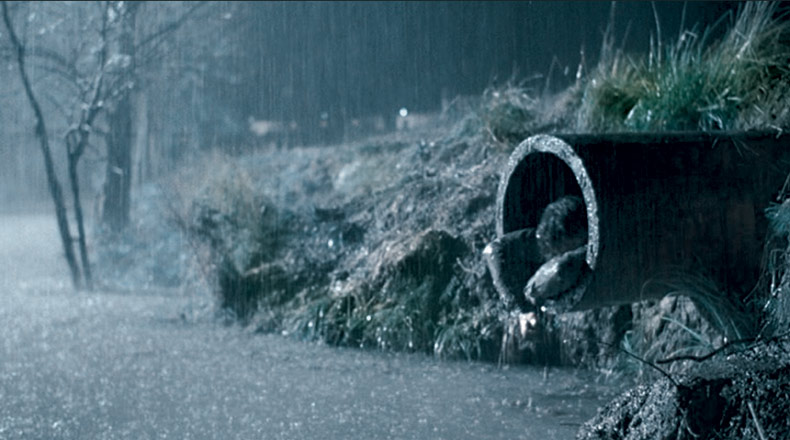
I love this shot and especially Andy’s body language as he slides out and slips through the water. We had a pretty simple setup that overlapped the action after Andy came out of the pipe. We had a dolly track laid up and along the creek just to carry him some distance away as he ran across the field in this pretty dramatic moment. Tim was a fantastic trooper wading around in this pretty foul creek. We were all happy when we wrapped that night, but I think Tim was probably happiest. I remember he said all he wanted was a shower to get all the crap off of him. We had a trailer standing nearby so he could jump out of the creek and into the shower right away.
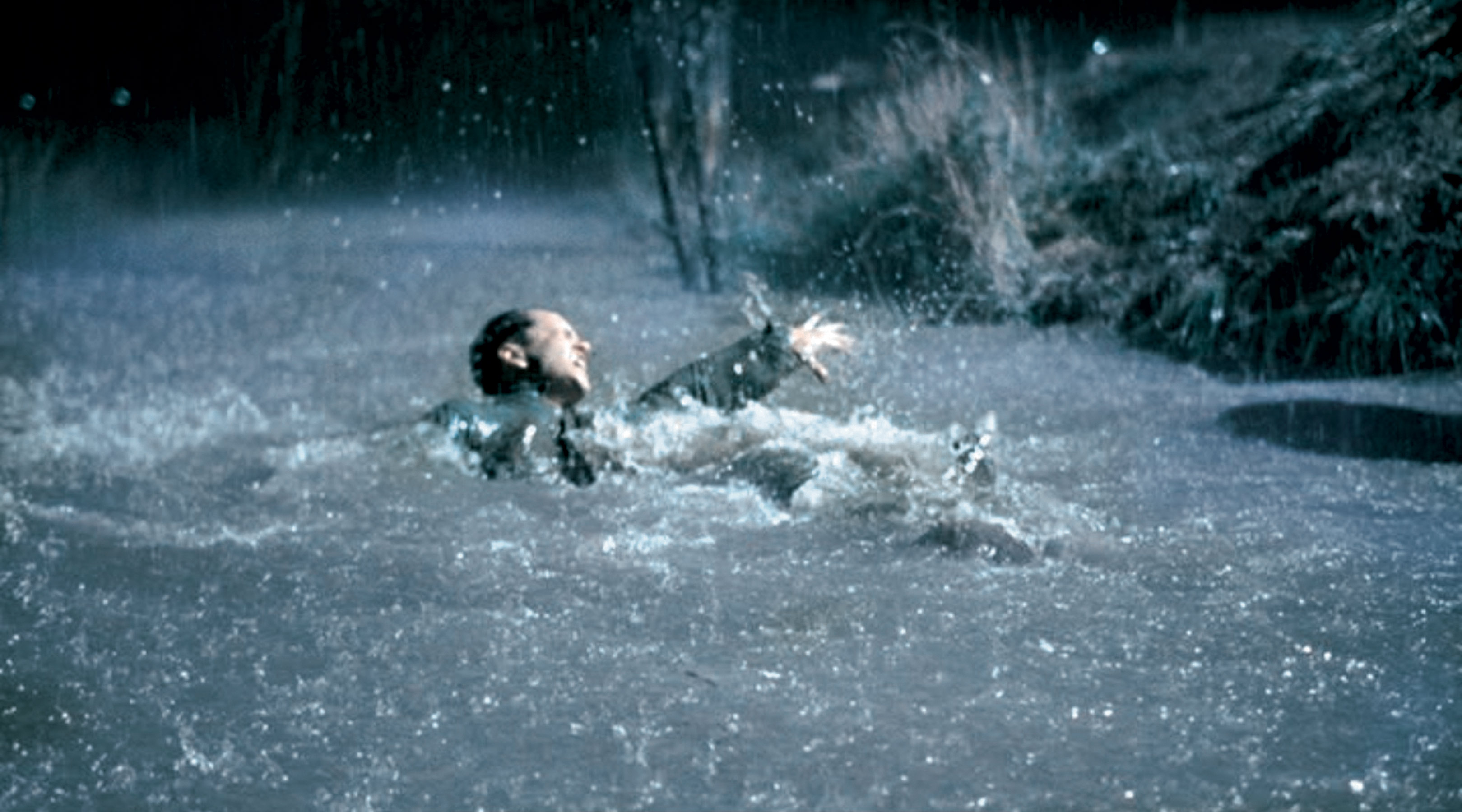
We added this tube to the banks of the creek. Terry and his crew dammed the creek and added water to raise the level of it, because the water level was pretty low. We worked on that for weeks and did everything to make it seem real, yet sanitary. We disinfected the entire creek, because it was a real pastureland and there were lots of cows in the water, and it was not the cleanest thing in the world.
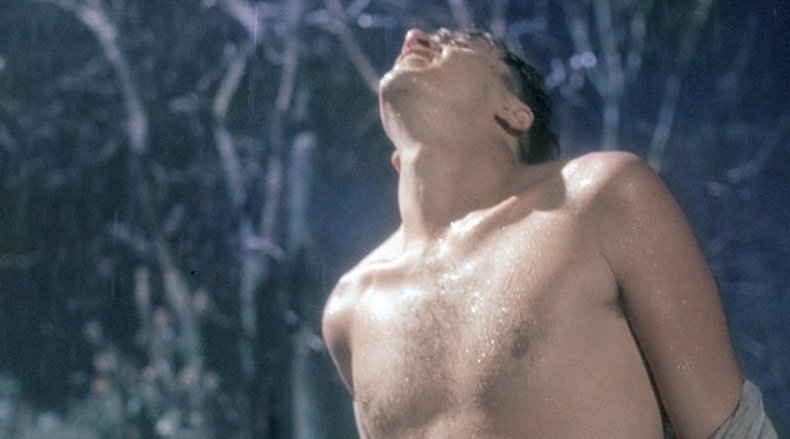
I needed a shot where Tim comes right up to the camera and starts stripping his shirt off. This was done with a Steadicam operator standing in the creek with his waders. The first two takes didn’t quite work as Tim swayed to one side then suddenly stopped for the camera. So I had the Steadicam pan to one side, and then as Tim swayed back, the lens went completely counter to his swing. Tim was really weaving within the frame, and our Steadicam operator wasn’t happy with the shot. But I was happy when I saw it in the monitor; I know he missed what his intention was, but Tim’s swaying added so much energy to the shot that it was obvious he couldn’t just stay still.
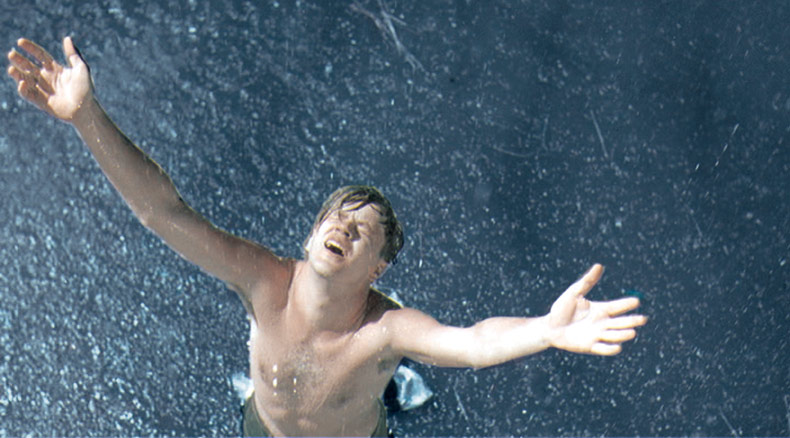
These moments of Andy holding his arms up towards the heavens in freedom recalls those Chapman crane shots from decades ago, in which the director of photography and the director sat on stools looking down at the action. Now we mostly always use a remote hot head so the controls are down at the base of the crane and the cameraman is operating the controls from there. Aside from this simple crane shot, the scene has no special equipment involved at all. We used a Steadicam at the creek, and the Ubangi-type extended arms to pull back from shots inside the pipe. We shot with Arriflex cameras because Roger Deakins preferred them to Panavision; they’re just a little louder than the Panaflex so we had to baffle them on occasion, but that’s about it.